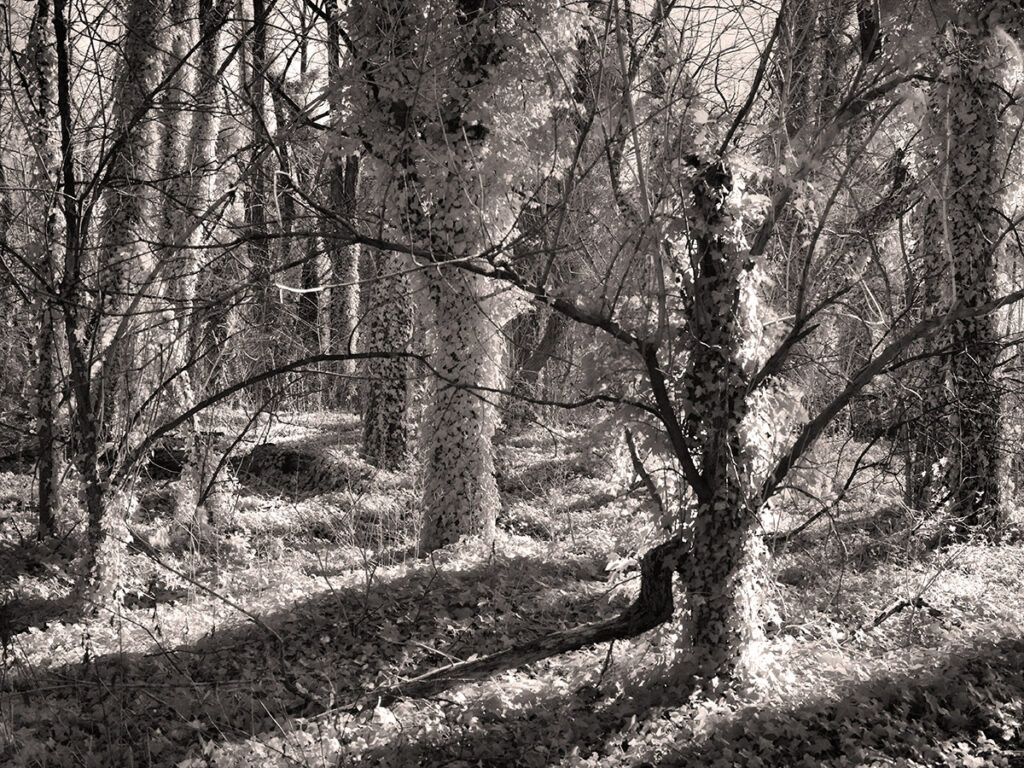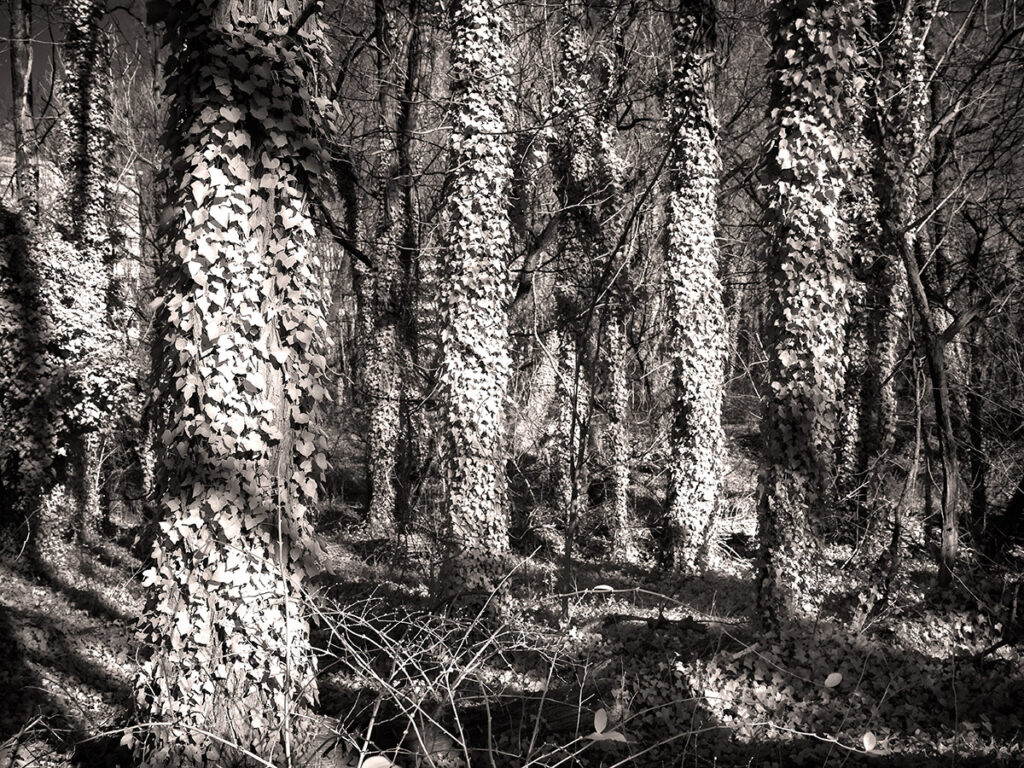

If you’re a photographer, one of the trends driven by your COVID-19 isolation is the search for visually interesting places near home that are vacant of people. This has taken me to some local cemeteries and parklands I wouldn’t otherwise have visited. The latest of these is a 25-acre tract of natural woodland known as Saddler’s Woods in Haddon Township, NJ. It’s named for escaped slave Joshua Sadler who founded a small community there in the early 1800s. At its center is the trickling headwaters of Newton Creek that broadens out through county parklands before it joins the distant Delaware River. A number of successful political battles have been fought since the 1970s to protect this patch of old-growth forest from developers. But one invader has never been beaten back is English ivy. It has swallowed up the place.
I have driven past Saddler’s Woods hundreds of times and this time, I and my camera walked in. In summer this place is a lush wall of green. In winter, denuded of their leaves, the same trees are stark silhouettes — except for those at the far western end of the place where heavy growths of English ivy have completely taken over. The tenacious woody vine envelopes everything on the ground and rises several stories to the tops of the highest trees.
An invader from Europe
I’m tempted to say Saddler’s Woods as an English ivy covered forest actually looks magical when you’re in the middle of it. No wonder the native European plant was brought here by upper class colonial gardeners in the 1700s. But what was supposed to be an item of ornamental flora quickly morphed into a crazed invader running beyond the garden into the wild. It can now be founds smothering woodlands coast to coast in the U.S.
And, photographed in infrared the stuff does have a certain etherial beauty to it and almost looks like snow. Walking through the west end of Saddler’s Woods makes me remember those dark and foreboding European forests that played such a role in the Grimm’s Fairy Tales of my youth. However, such fantasy is no consolation to the Saddler’s Woods Conservation Association that is working so hard to maintain the historic woodland.
Goats to the rescue?
Word is that the Saddler’s Woods group is even investigating the use of dozens of goats to eat off as much of the ivy ground cover as possible. Goats, it turns out, love to eat English ivy. I guess it’s just a shame they can’t also climb trees and eat skyward.



